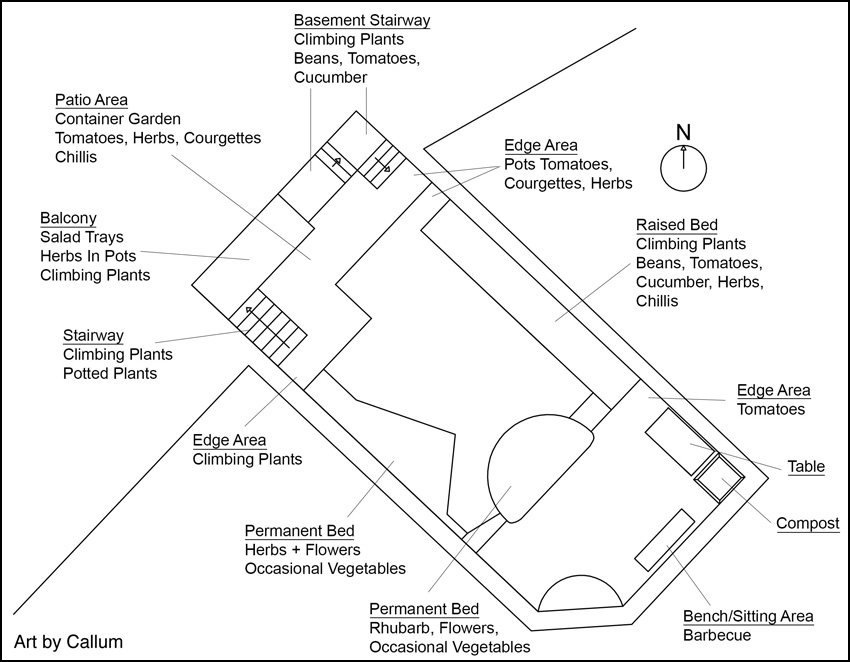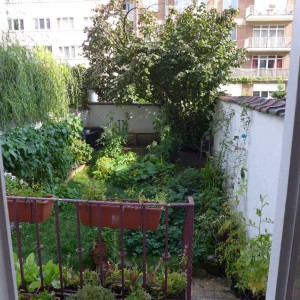
Where to start?
Like any good workman start by deciding the “tea area”, where you are going to have lots of breaks, drinking tea. Picking a good spot allows good overall observation of the garden. Observation is the key factor to all gardening. Take time to look.
Work areas
Decide the various work areas. Some areas will be busy with activity, such as around the compost bin and nursery, other areas will be planted and then visited for watering and harvesting. Pathways and stairs are busy but their edges are often very suitable for planting. Walls and stairs provide opportunities for elevational planting.
Consider all activities that will occur in the garden. These should include areas for eating out, for drying laundry, children playing and toddlers visiting. Garden tools and equipment should be suitably housed and secured.
Water & electrical supply
One simple way in a new garden to reduce labour requirements later is to consider installing water and electrical supplies to the garden from the house. With modern tools and gadgets technical gardening has never been easier, from automated watering to building garden frames and structures.
Floor plan
A simple floor plan can map out the existing garden. Onto this the main new elements are placed, for example, a raised bed area and a compost bin. Around this, additional growing spaces can be identified. These can be corners and edges, often overlooked, and in most cases can turn out to be the main productive areas of a small garden. In an urban garden it is better to have many versatile small growing areas over larger fixed beds.
What goes where?
In a new vegetable garden, and in a working garden, there is a constant process of trial and error. In the first year trying a large number of plants in multiple locations provides key information for the future. Most vegetables can be tried on a small scale to start with.
Other aspects of the garden to consider include a nursery area for bringing on and hardening off young plants in the spring. This can house a cold frame or plastic covered frame. In spring this is the busiest area and therefore should be situated close to the “tea area”.

The area closest to the house can be considered the busiest area for kitchen use. It’s closeness allows increased attention so is ideal for salad and herb production. With beans, tomatoes and courgettes grown out in the garden proper a zoning system emerges based around regular use with those most used closest to the house.
In starting a vegetable garden more thinking is required than doing. Observation is the key. Looking around at neighbouring gardens provides valuable information. Finding a local vegetable gardener or a good garden supplier to visit can quickly get you started.
All gathered information should be considered at length over several cups of tea in the garden.

